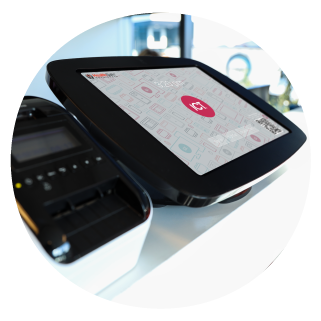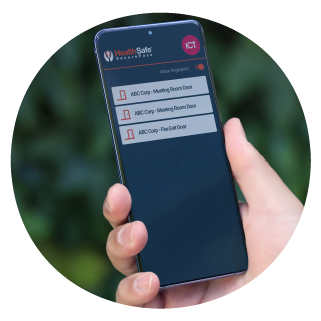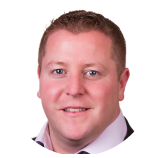
HealthSafe’s Kevin McAfee on prioritizing people and protection
With the recent launch of the HealthSafe SecurePass integration with Protege GX, we asked HealthSafe's Founder and Managing Director Kevin McAfee to explain how natural disasters and terrorism led him on a worldwide search for a solution...
Background
I think to understand HealthSafe, you need to know a little bit about me.
I was raised in Belfast, Northern Ireland. The Troubles there have been well documented, and at the age of sixteen I experienced this first-hand when I was caught up in an explosion in Belfast. What I saw that day and, in the aftermath, has never left me - and in many ways, started me down the path I'm on today.
A few years after I emigrated to New Zealand in 2007 there was a mining incident in Chile where miners were trapped underground for 69 days. Months later, we had the Pike River Mine incident here in New Zealand that hit close to home. Then the following year, in 2011, the Christchurch Earthquake happened.
I saw the devastation firsthand when I visited Christchurch after the earthquake, as a National Facilities Manager for a major retail group. Amongst the aftershocks, I realized we didn't know everyone who was on site. We struggled to find out if people were safe. Memories of my experience in Belfast came flooding back to me, only this time it was an entire city devastated.
 Back home, I remember feeling guilty that I was sitting having a nice cup of tea. Our lives in Auckland seemed normal, while people in Christchurch couldn’t return to their homes and were still trying to find family and friends.
Back home, I remember feeling guilty that I was sitting having a nice cup of tea. Our lives in Auckland seemed normal, while people in Christchurch couldn’t return to their homes and were still trying to find family and friends.
It was this feeling which led me to start writing down the issues I was facing, to find solutions that would help the business. I looked across Australasia and further afield, and we just couldn't find what we wanted. When I really looked at the systems, they were clunky, didn't have everything needed, and weren’t all on one platform.
In New Zealand, there was a law change with the Health and Safety at Work Act 2015, and there were also incidents where contractors, staff, and people were getting hurt on my sites. I started to experience other challenges about health and safety governance for businesses, and how they should be supporting contractors.
This idea kept floating around in my mind. I spoke to the workers group and some other companies who were all having the same problem. There was no solution out there. Looking back, if I'm quite honest, creating something like Secure Pass needed someone who was caught up in those environments. From my experiences, I knew it had to be all on one platform, to make the business a success.
Integrating Day to Day Management
As well as helping to protect people in emergencies, HealthSafe was created to help the daily compliance around contractor, visitor and staff management. The operational requirements ensure a contractor is compliant before they come on site and that they hold insurance that coincides with the business's expectations in case there's an accident, and any prequalification questions like a health and safety checklist or other specific licenses required.
We needed not just these compliance checks, but governance to make sure if they didn't meet those requirements, then they wouldn't get into the building. That's where the integration with access control systems came. I started seeing this happening about nine years ago, after having exposure to security events where contractors weren't approved, and they were on the premises and able to get around.
“Bringing everything together, I think it's become more powerful than I thought.”
That's why we started the journey with ICT. To say “yes, they meet requirements, we'll let them in”. It gives businesses the confidence that a contractor is approved, and frontline staff don’t have to police all the documents themselves. Linking this to access control, businesses can also check on people scattered around a site. With ICT, when they swipe in, it will tell you on the status page where they are or which door they’ve accessed. All this information can then be used to locate them if needed.
Bringing everything together, I think has become more powerful than I thought. It’s all about managing risk. You're looking for elimination, but that's not always achievable. So, if you can confirm they're an approved contractor who meets that business governance, you can let them in. If not, you can stop that happening and minimize or remove the risk – giving the business real comfort and security.
Protecting People
The whole foundation of HealthSafe is built on protecting people. Once you get the call - when you know there’s a potential risk - you need a solution that knows who is on-site and can then support communication to instantly raise their awareness of the risk, or to confirm they are safe. It's not about buildings, it's about the people. This is no different for any business.
That obviously dictated how we created the two-way mass communication solution. We met with business owners and basically wrote the script for the two-way mass communication based off the Lindt Cafe siege in Sydney and the car attack in Melbourne, Australia. We had a development plan in place, then the Christchurch mosque shootings happened. We stopped development of HealthSafe and went straight to work in creating the two-way mass communication because we just couldn't let that happen again.
The shooting happened on a Friday afternoon, our team started work on the Saturday morning and by the next Friday we were at a stage where we were able to send out a communication to the system. I’m so proud of my team, they literally worked around the clock on their own time, because they believed in what we’re trying to achieve here, which is protecting your people.
Put to the Test
Just recently, we put the system to good use. There was a tsunami warning after an earthquake off the coast of New Zealand. We had multiple businesses up and down the country, and businesses in Australia who have a presence in New Zealand, using the mass communications to do exactly what we hoped. Firstly, they could see their people on site. Secondly, they could communicate with them and ask if they were safe. And finally, their people could communicate back and tell them they were safe.
We noticed there was ongoing communication with the change in alert levels around the tsunami warnings. There were constant updates, with strong communication levels from some businesses to make sure that their people were kept up to date with what was happening. It was immensely powerful to see.
“After the Christchurch earthquake, it took over 21 days to for me to confirm where everybody was. With SecurePass, businesses can now find this out in seconds or minutes.”
A lot of businesses just had visitor management, and not the mass communication subscription. So, we switched it on across the country for everybody. Then we had to get all hands-on-deck to educate and train people how to use it. We started getting calls about 6:15 in the morning, then from 8:00am, the whole team were on their laptops helping clients to get the mass communication loaded into the system and help them to send the messages.
We had to take a hard look at our processes, it came with lots of challenges, but it exceeded my expectations. And the feedback we got afterwards was great. So many businesses just didn't want to go there again. They want their people trained. And if something ever happens again, they have a business continuity plan and SecurePass is part of it, to really support their focus on Health & Safety.

Quick, Accurate Information
After the Christchurch earthquake, it took over 21 days to for me to confirm where everybody was. With SecurePass, businesses can now find this out in seconds or minutes. If you take the situation with the earthquake, the network and phone lines are going to go down. With SecurePass, if you're in Auckland, you will see on screen everybody who is in Christchurch. You might not be able to communicate straight away, but when you do get that line of communication open, you know who you're looking for.
Once the network's back up again, you get your communication out and get people to confirm if they're safe. That allows you to narrow it down. Out of a list of 100, you might only have 10 people who need help. So you're not focusing your efforts on another 90. You can also give accurate information to emergency services, quicker than you were able to in the past. That's the key part that I see when I look at major disasters.
Looking Ahead
I think there are lots more changes on the way too, some that we keep close to our chest! But contactless is going to be a big focus going forward, because Covid is just not going to go away and there's going to be something else next time. There's going to be a lot more contactless solutions out there and I believe it's going to change industries.
One sector that we are working very closely with is the food industry. Anywhere they're creating food, they want to know how many people are in there, what time they're in there, have they got specific inductions? And all these processes are tied into security.
More and more businesses are wanting one platform to manage everything. This has been happening for the last five or six years anyway, but with all these other capabilities coming out, systems must all integrate on one platform (like SecurePass does with ICT), plus be easy to use, with a better focus on user experience. Technology is getting smarter through AI (we already use AI on SecurePass and our WalkMe function). We're introducing some of these forward-thinking ideas into the system now.
Another area is innovation around systems for lone workers, which SecurePass has also. We're starting to look at solutions for when they work in areas where there's no network. We're focusing on innovative technologies like the low-earth orbit satellite capability that Elon Musk and others are doing. Over the next three to four years, you're going to see the full coverage of the world, so some of the holes with GPS won't be a problem anymore. That means lone worker tracking will go anywhere you can be located, and assets will be the same. These are some of the key changes that we're starting to see now.
Ongoing Changes due to Covid
The environment has changed so much in the last 15 months with Covid. It’s dictated quite a lot of change in the features of the system. We have a contactless system, but last year, it needed to be easy to introduce at any level of business. And that's why we have the QR code, or geo-fencing for sign in.
Last year HealthSafe went out with QR codes for all our customers for free to help businesses get back up and running. We also introduced Covid questions. So, it's not just about contractor sign in, it's about improving business oversight. We ask the questions like “are you sick or have you been feeling poorly?” “Have you been overseas in the last 14 days?” So, you have a complete suite of governance that feeds back into contract tracing capabilities in the system. If you found out that someone has Covid, you can go back to where they were, who they were with, and start to protect your people and your business.
It’s been a difficult year for a lot of businesses, but for me it’s been about bringing it back to the our core values. One thing we never really talked about, is how we used our values to support our clients like airports, hotels and the tourism sector. Their businesses still needed to run, and so we gave them SecurePass free for a year to help them manage their people without added financial stress. That's what HealthSafe is about - protecting people. Sometimes that protection isn't about health and safety, it's just about being a good sort and looking after people and that’s exactly what we do.
Please note that HealthSafe Secure Pass is currently only available to customers within New Zealand and Australia.

Guest Post written by Kevin McAfee
Founder and Managing Director, HealthSafe
Kevin hails from Belfast, Northern Ireland and moved to New Zealand in 2007. When not running HealthSafe, he enjoys spending time with his family, reading autobiographies and the occasional trip to Queenstown!

